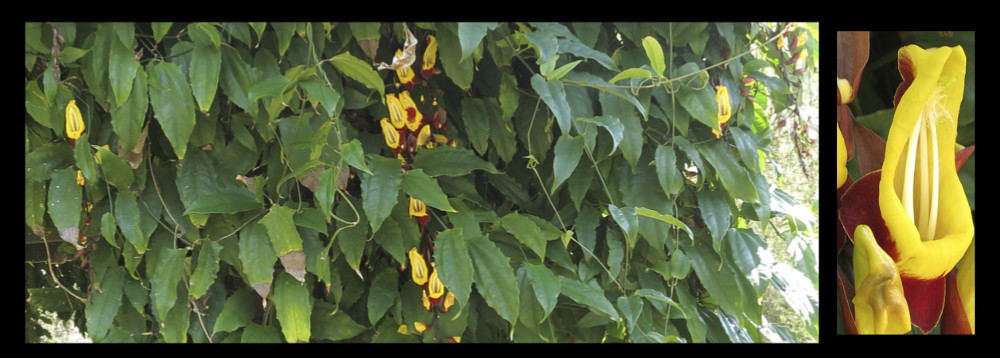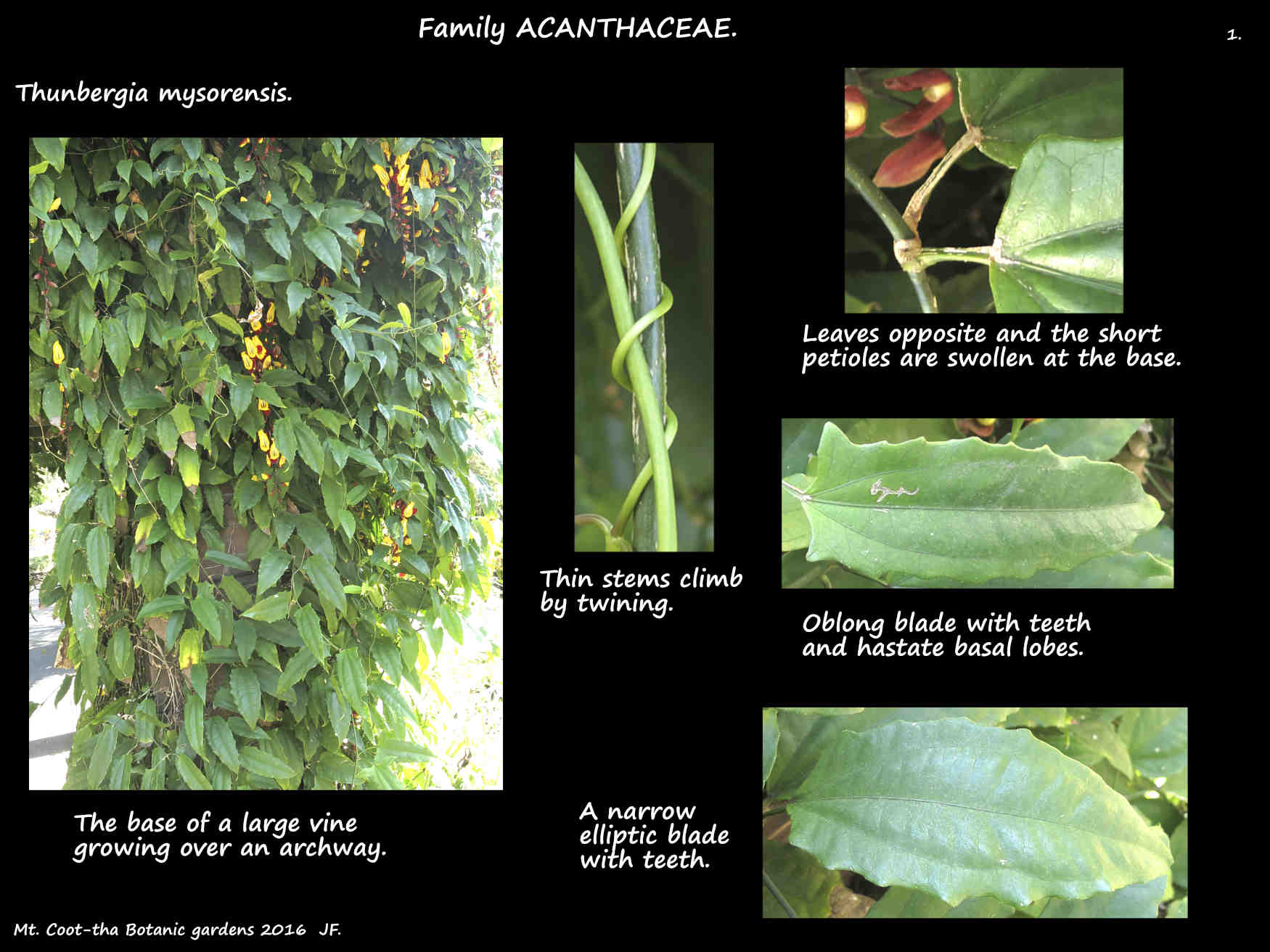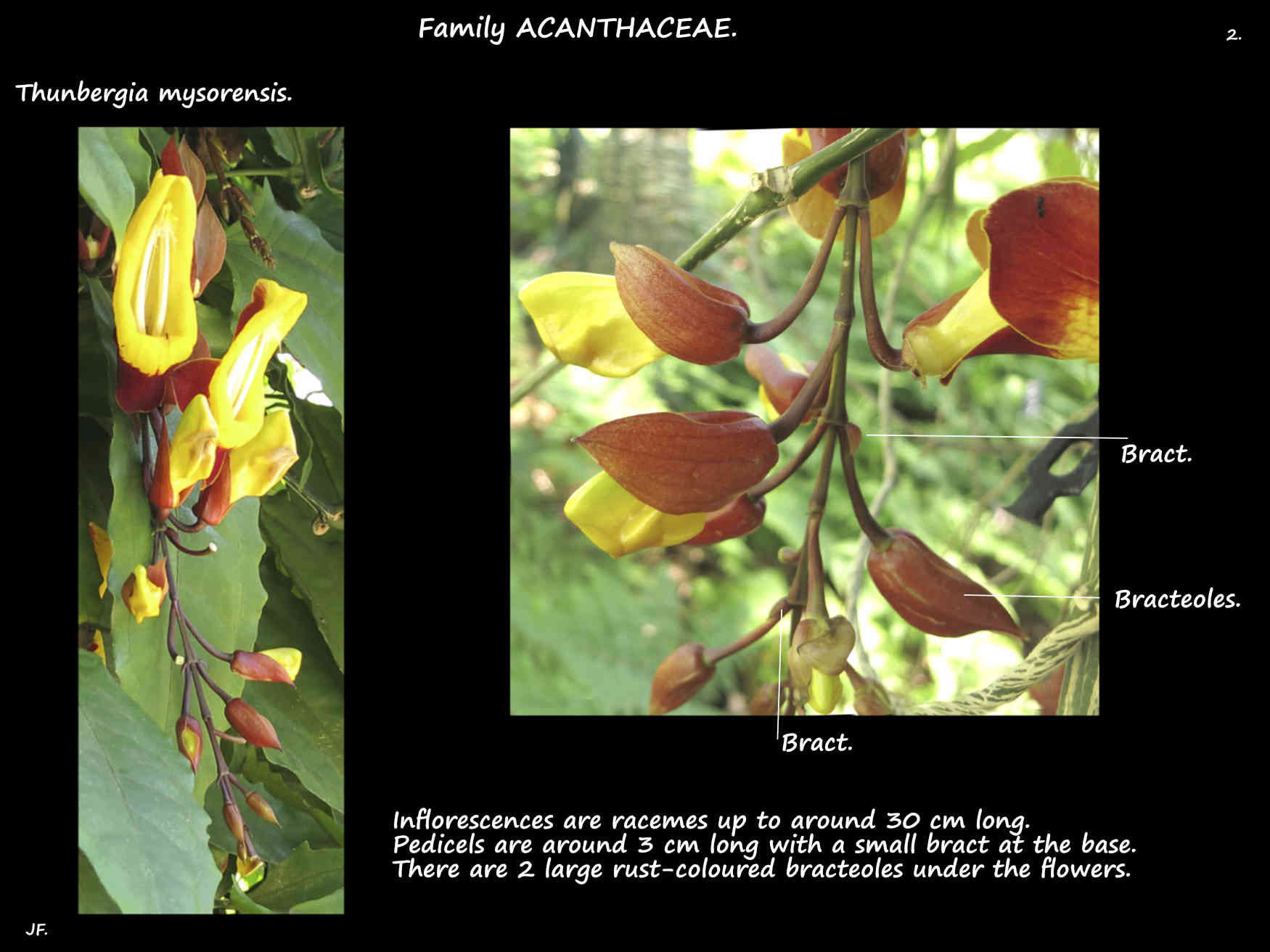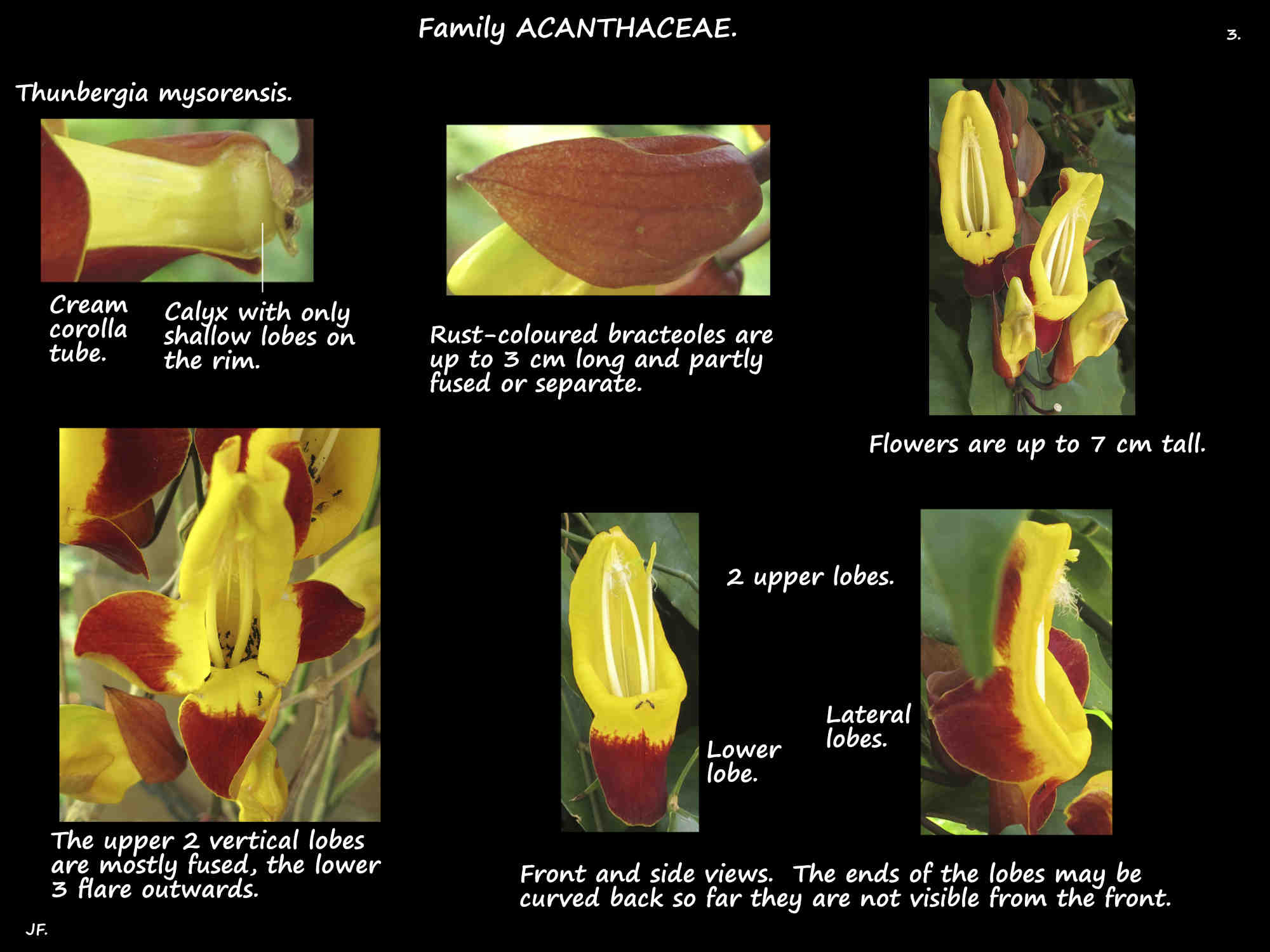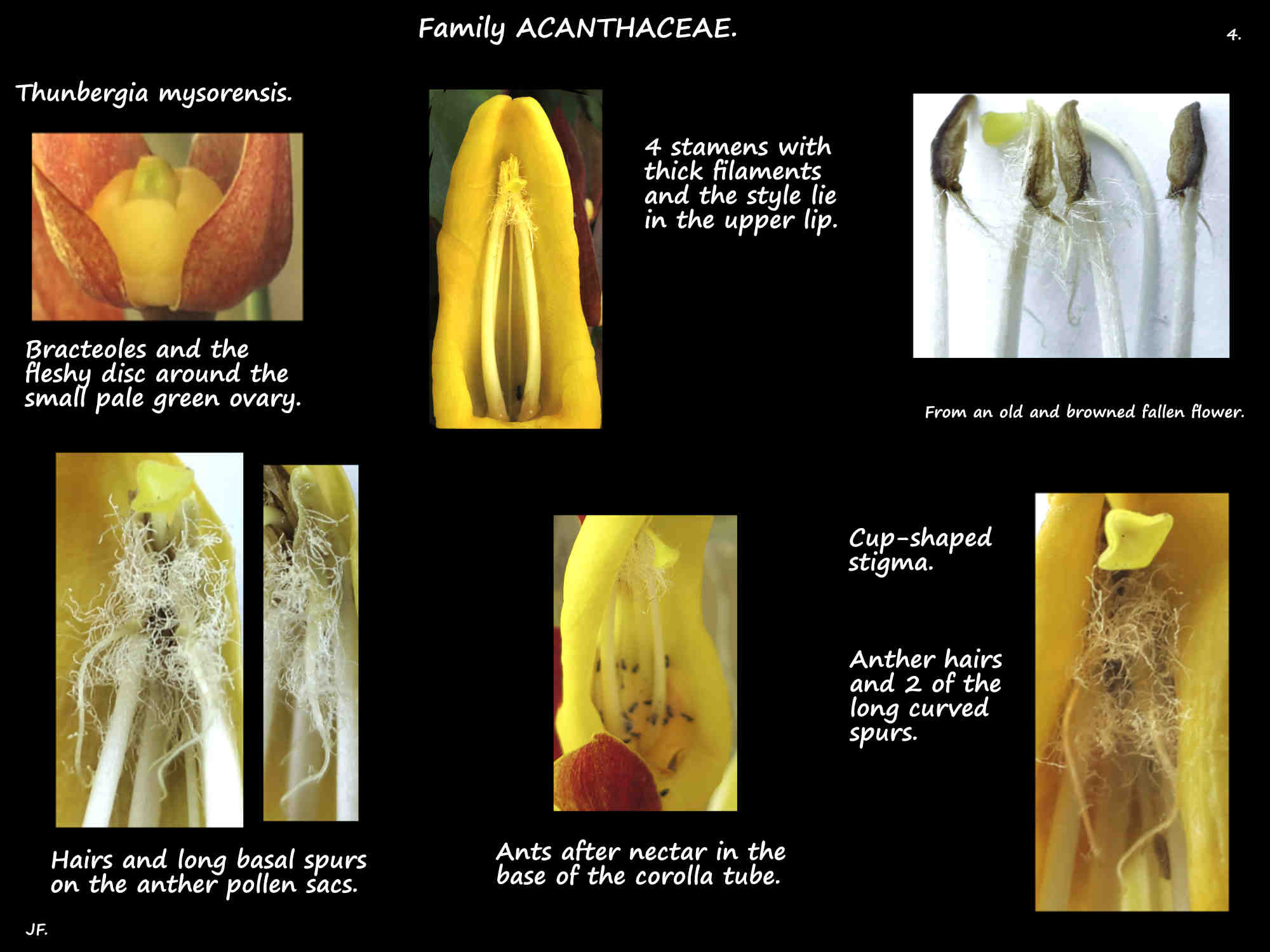Thunbergia mysorensis.
Mysore trumpet vine is an exotic plant that is occasionally cultivated.
The multiple slender stems can be up to around 6 m long.
They climb by stem twining.
Young stems are green and older ones are brown and woody.
They sucker at the base.
The leaves are oppositely arranged.
The petioles, up to around 4 cm long have a swollen base.
The mid green blades are up to around 16 cm long.
They are narrowly elliptic to oblong.
The edges are toothed and there may be hastate lobes at the base.
Inflorescences are pendulous clusters (racemes) that can be over 30 cm long.
The individual flowers are on pedicels about 3 cm long with a small bract at the base.
Under each flower is a pair of rust coloured bracteoles up to 3 cm long.
Flowers are up to 7 cm tall by 4 cm wide.
The bases of the 5 sepals are fused forming a narrow ring around the ovary.
The rim may be almost flat or have up to 12 small lobes.
The bases of the 5 petals are fused into a long cream or white corolla tube.
This is constricted above the ovary then expands to a very wide throat.
The 2 long upper lobes are mostly fused with the ends curving backwards.
The 3 smaller lower lobes flare laterally and downwards and they may also curve backwards.
The throat and the base of the lobes is a bright yellow.
The ends of the lobes are a deep maroon or rusty red.
There are 4 stamens in 2 pairs up to around 4.5 cm long.
They lie, with the style along the upper lip of the corolla.
The anthers, up to 1 cm long have long white hairs mainly towards the base.
There are long curving basal spurs.
There is a fleshy yellow nectiferous disc around the ovary.
The 5 mm long ovary has 2 locules with 2 ovules in each.
The style is around 5.5 cm long with the cup-shaped stigma lying just above the anthers.
Fruit are not seen in cultivated plants.
J.F.
